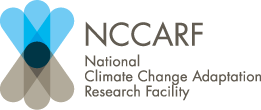You are here
Image: Stephen Flood, Victoria University - Wellington City Council
Lake Macquarie City Council, in the Hunter region of New South Wales, has employed an innovative collaborative approach to address the risk posed by sea-level rise to low-lying settlements.
A 2012 flood study revealed that nearly 6,000 lakeside homes in the City could be affected by flooding. A sea-level rise of 0.9 metres would increase the number of affected homes to more than 8,500.
The following year, Council instigated a pilot project to develop an adaptation plan for an existing neighbourhood, to identify actions that would minimise the impact of flooding and sea-level rise. Coincidently, flood insurance became a mandatory component of Australian property insurance. More than 800 Lake Macquarie residents signed a petition of no confidence in Council’s flooding and tidal inundation policy, believing that the policy was increasing insurance costs and decreasing property values.
Sharon Pope, Council’s Manager of Integrated Planning, explains what happened next.
‘We decided to involve the community in developing local adaptation plans. The earlier there was input the better. Residents were invited to co-design the engagement process. We ran a series of workshops and information sessions, and invited all members of the community.’
‘There were three kinds of responses. One was “you’ve flagged this as an issue but you don’t have a solution so you’ve caused property value to decline”. Another was, “this is too hard for us and Council should prepare the approach”. The third was, “yes, we live here, we understand the problem and we want to be involved as we’ll know what will work”.’
‘There was quite a large angry mob at our early meeting, but we quickly moved to 30 to 60 engaged people. Ten met fortnightly to develop an adaptation plan.’
The plan sets out a strategy to the year 2100, combined with a 10-year action plan. A key decision was to defend the foreshore and progressively raise low-lying land and assets. The plan includes development controls to manage flood risk and protect land, triggers linked to changes in hazards, and design and construction standards for new assets.
‘Residents often see Council staff as outsiders, even the enemy. But they are far more open to messages from a member of their own community,’ Sharon says.
‘The community owned the adaptation plan. They even came up with a slogan for adaptation: “Plan for the worst, act when necessary”. If you don’t have a plan, you don’t have capacity to act.’
‘It was a long process. It took about three years. But we saw a vocal group of people opposed to Council’s Tidal Inundation and Flooding Policy become champions and community advocates for planning for climate change adaptation.’
More information: Council website
Do you have information on likely sea level rise in your region?
Are there ways that this Lake Macquarie City Council initiative could be a model for your area?eig5y976g0uzyrll.png





